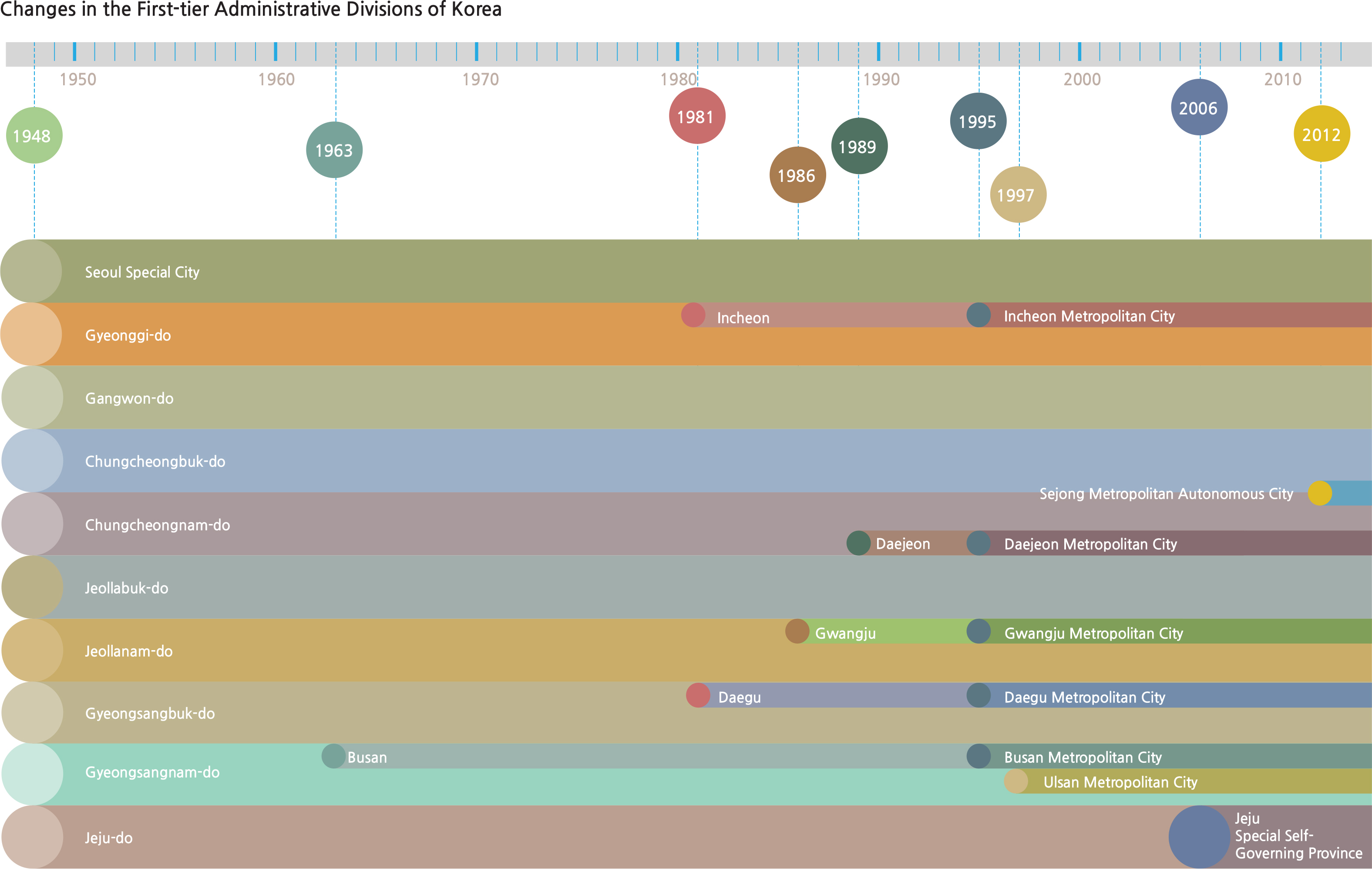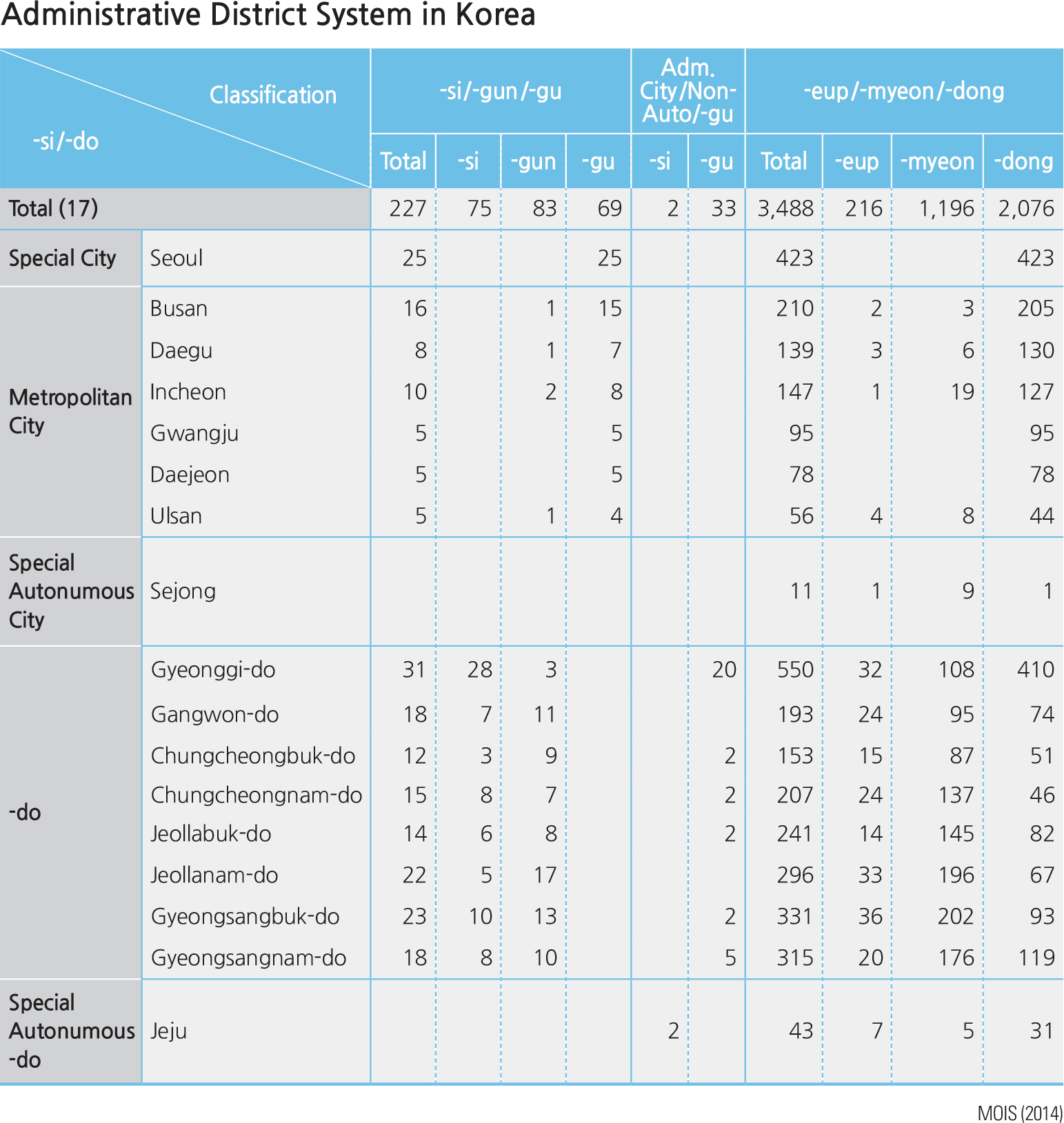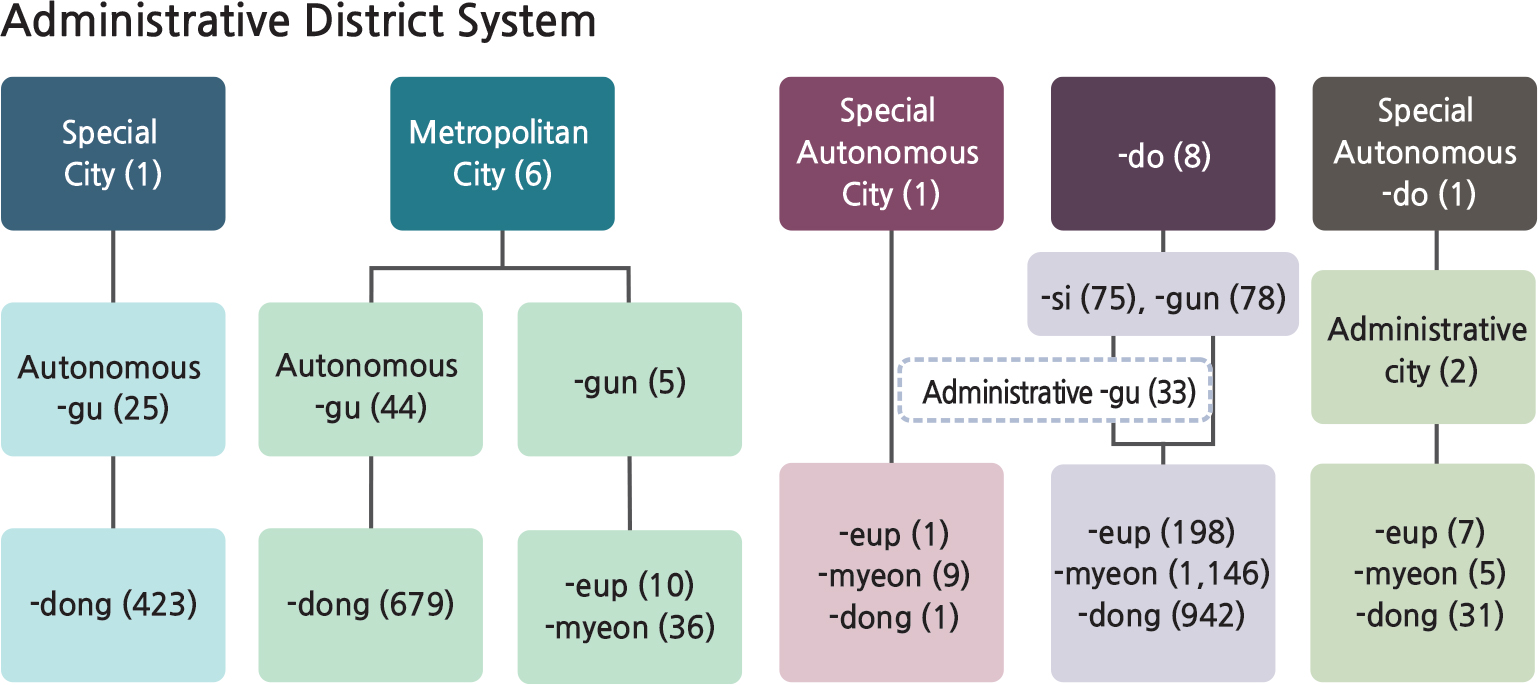Comprehensive Edition
Administrative districts are governmental area units for local administration, but at the same time they define regional and local identity. Since the nation’s founding, Korea has promoted administrative efficiency through a number of administrative re-organizations. In the midst of these changes, a -do-oriented (province-oriented; -do is the Korean name for a province) administrative district system of the Joseon Dynasty is the basis for the modern metropolitan administrative system in Korea. In 1945, the administrative system for the whole Peninsula was comprised of one special city, 15 do (provinces), 23 bu (cities), 208 gun (counties). The following year, Jeju Island was separated from Jeollanam-do to become Jeju- do, a province of its own. In 1948, the -bu became the -si. The South Korean government carried out comprehensive reforms to harmonize living spaces and administrative districts in 1962. For example, Geumsan-gun in Jeollabuk- do was transferred into Chungcheongnam-do, and Uljin- gun in Gangwon-do was merged into Gyeongsangbuk- do. The reforms after 1960 mainly took place due to urban expansion caused by population growth in cities and suburbanization. Small towns attained cityhood as their population increased, and major cities were promoted to directly-controlled municipalities so that the central government could manage them directly. During the 1960s, as Busan was promoted to a directly-controlled city, Korea consisted of 1 special city (Seoul), 1 directly controlled city (Busan Directly-Controlled City), 9 do (Gyeonggi- do, Gangwon-do, Chungcheongbuk-do, Chungcheongnam- do, Jeollabuk-do, Jeollanam-do, Gyeongsangbuk-do, Gyeongsangnam-do, and Jeju-do), 30 si (cities), and 140 gun (counties). Large provincial cities, like Incheon, Daegu, Gwangju, and Daejeon, became directly-controlled cities in the 1980s.
In 1995, an overall provincial administrative reform was carried out. This reshuffling integrated cities and counties and aimed at balancing development between growing urban and declining rural areas, securing land for urban development, promoting administrative efficiency, and addressing inconsistencies between spaces of daily life and administrative districts. Also, directly-controlled municipalities were re-organized into metropolitan cities by combining neighboring areas. In 1995, forty urban/ rural integration cities were established, and 5 metropolitan cities were created, including Busan, Daegu, Incheon, and Daejeon. Ulsan attained metropolitan cityhood in 1997.
After the year 2000, continuous merging of cities and counties took place and Jeju Island was raised to the status of Jeju Special Self-Governing Province. Sejong, a multifunctional administrative city, became the Sejong Metropolitan Autonomous City in 2012. As of January 1, 2014, the Republic of Korea has 1 teukbyeol-si (special city), 6 gwangyeok si (metropolitan cities), 1 teukbyeol jachi-si (special autonomous city), 8 do (provinces), and 1 teukbyeol jachi-do (special self-governing autonomous province).
Brief Interpretation of the Map
Local autonomy refers to various activities through which a self-governing body representing the residents within a certain regional boundary carries out its political and administrative decision-making while maintaining relative independence from the central government. In this global era, the growing demands for improving regional competitiveness, inter-regional development equity, and resident-oriented administrative services have necessitated local autonomy more than ever. Local autonomy mainly consists of autonomous power over local affairs and an independent budgetary capacity in a geographical region with an explicit boundary where residents and a self-governing body are located. Local governmental autonomy has recently become a global trend.
|



